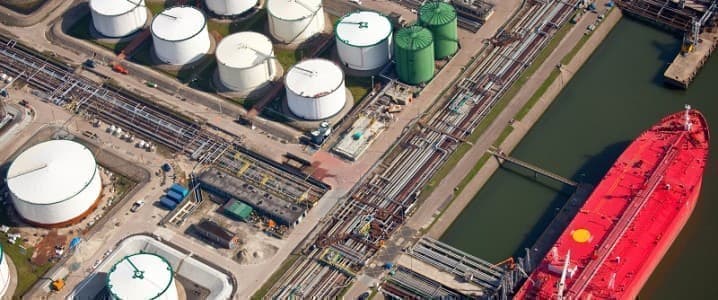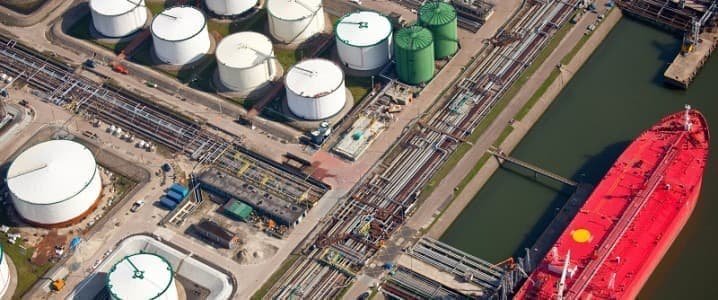By Simon Watkins – May 06, 2025, 4:00 PM CDT
- China’s Zhenhua Oil signed a long-term LNG deal with UAE’s ADNOC.
- The UAE’s location and infrastructure make it a key energy and logistics hub, vital to both Chinese and U.S. strategic interests.
- Despite past cooperation, recent UAE-China military and energy ties have complicated Washington’s relationship with Abu Dhabi.

The United Arab Emirates (UAE) holds much greater geopolitical significance to both China and the U.S. than might be inferred from either its size or its current crude oil production of just under 3 million barrels per day (bpd). This is why any major new deals signed with it by either side are so thoroughly scrutinised by the other, and why both continue to leverage whatever economic means they can to attempt to increase their influence across the collection of emirates. The very recent five-year sales and purchase agreement signed between China’s state-owned oil and gas company Zhenhua Oil and the Abu Dhabi National Oil Company (ADNOC) for around 800,000 metric tonnes a year of liquefied natural gas (LNG) starting in 2026 is the latest deal to catch the U.S.’s attention, a senior Washington-based legal source who works closely with the Office of Foreign Assets Control told OilPrice.com last week. “Chinese LNG deals in the Middle East are always of interest to us, and so is whatever Zhenhua Oil is up to in the region,” he said.
It is the UAE’s geographical position next to Saudi Arabia and Oman with coastlines in both the Persian Gulf and the Gulf of Oman that is one reason for its oversized geopolitical importance. This makes it an ideal energy hub between the West and the East, supported further by its plethora of ports and storage facilities spread across the seven constituent emirates of Abu Dhabi, Ajman, Dubai, Fujairah, Ras Al Khaimah, Sharjah, and Umm Al Quwain. Fujairah is particularly well-positioned to offer alternative oil transit options that might come from supply disruptions from Iran and its regional proxies, especially the Houthis. This is due to its location both outside the Persian Gulf and a healthy 160 kilometres from the politically ultra-sensitive Strait of Hormuz, through which around 30% of the world’s oil has historically transited. This is a key reason why China made the UAE a focus of the Middle Eastern section of its multi-generational power-grab project, the ‘Belt and Road Initiative’ (BRI), back when it was launched in 2013 by President Xi Jinping. Through its ‘Iran-China 25-Year Comprehensive Cooperation Agreement’, first revealed anywhere in the world in my 3 September 2019 article on the subject and as analysed in full in my latest book on the new global oil market order, Beijing exercises enormous influence over what happens in the Persian Gulf and Strait of Hormuz and wants to keep it that way. Through other similar deals in the region, China also has a hold over the Bab al-Mandab Strait, through which crude oil is shipped upwards through the Red Sea towards the Suez Canal before moving into the Mediterranean and then westwards.
Related: ADNOC Poised to Win EU Approval for $16.6 Billion Covestro Takeover
In energy terms, UAE also offers rare LNG capabilities in the region, with its Das Island liquefaction and export terminal and the ongoing expansion of its LNG capacity through the Ruwais LNG project. In the U.S.’s eyes, China’s recent history in the LNG sector is most notably linked to its almost supernaturally prescient flurry of deal-making in the 12 months that preceded Russia’s invasion of Ukraine on 24 February 2022. In that case, Beijing’s attention was focused on Qatar, as analysed in full in my latest book. After that, LNG became the de facto emergency energy supply of the world, as it does not require the costly and time-consuming infrastructure build-out needed to move gas or oil through pipelines and can simply be bought fast in the spot market and shipped quickly to wherever it is needed. Following a long period of frank discussions between the team of then-U.S. President Joe Biden and Qatar’s leadership, China found the easy relationship that it had enjoyed with Doha in the run-up to the invasion of Ukraine became more difficult. Nonetheless, Washington knows that in the event of another similar scenario – a larger country looking to ‘repatriate’ a smaller breakaway state, such as Taiwan – LNG will again be the go-to form of emergency energy.
The presence of Zhenhua Oil in the deal — its first long-term LNG supply contract — also does not sit well with the U.S. Established in 2003, it is the oil exploration and production subsidiary of Chinese state-owned defence contractor Norinco and is active across several geopolitically ultra-sensitive countries including Myanmar, Egypt, and Iraq. It is apposite to note in this regard that oil and gas developments in a foreign country legally allow the companies undertaking those investments to safeguard them by whatever means they deem necessary, including by the stationing of tens, hundreds, or thousands of heavily-armed security personnel around the sites. Indeed, it was Zhenhua that on 2 January 2021 made a multi-billion-dollar deal with Iraq’s Federal Government in Baghdad to prepay for four million barrels every month for five years to be delivered to China by Iraq’s State Organization for Marketing of Oil (SOMO). This was exactly the same strategy that Russia used to take over Iraq’s oil industry in its northern semi-autonomous region of Kurdistan in 2017, as also detailed in my latest book. So extraordinarily obviously dangerous to U.S. interests in the Middle East and elsewhere was this deal seen by Washington at the time that it eventually succeeded in forcing the Iraqis to suspend the arrangement.
Underlying all of this is that Washington’s recent history with the UAE has been chequered to say the least. In Donald Trump’s first term as U.S. president, it had played an instrumental part in his vision for a new relationship architecture between the U.S. and the Middle East. This was to have been centred on a series of relationship normalisation deals signed between the Arab countries and Israel, with the U.S. as the key broker, and the UAE became the first major Arab state to sign such an agreement on 13 August 2020. The emirate was also to have played a key role in securing India as the regional counterpoint to China’s increasing dominance in the Asia Pacific region. Washington believed that a then-recent clash between Indian and Chinese troops in the Galwan Valley might mark a new push back strategy from India against China’s policy of seeking to increase its economic and military alliances through the BRI. The U.S. believed that this military assertiveness might also be echoed in India’s economic desire to finally make substantive progress on its ‘Neighbourhood First’ policy as an alternative to the BRI programme. Additionally propitious for Washington in this regard was that India’s rapid economic development was expected to drive a huge expansion in its demand for oil and gas. Indeed, at the time, the International Energy Agency predicted that India would make up the biggest share of energy demand growth at 25% over the next two decades. Peculiarly to many perhaps, the UA.E. had a uniquely close relationship with India in the field of energy, as also detailed in my latest book.
That said, this positive-looking relationship between the U.S. and the UAE began to unravel after Trump left office. In the Christmas period of 2021, U.S. intelligence sources identified that China had been building a secret military facility in and around the big UAE port of Khalifa. Based on classified satellite imagery and human intelligence data, U.S. officials stated that China had been working for several months “to establish a military foothold in the UAE.” Just after Russia invaded Ukraine, the UAE’s Sheikh Mohammed bin Zayed al Nahyan declined repeated requests from Washington to take a telephone call from then-President Joe Biden who wanted to ask the UAE for help in bringing energy prices down to help ease spiralling inflation in the West. And early February 2024 saw the UAE inform the U.S. that it would no longer allow its warplanes and drones based at the Al Dhafra air base to carry out strikes in Yemen and Iraq without notifying Emirati officials ahead of time. This prompted Washington to move its key fighting air assets to nearby Qatar.
However, as it stands, it is extremely difficult to imagine that Sheikh al Nahyan would decline a telephone call from Donald Trump. Moreover, the U.S. still has a presence on the ground in the UAE that it can leverage, most recently in the form of a strategic partnership agreed between ExxonMobil and ADNOC to establish world’s largest low-carbon hydrogen facility. Additionally, Washington believes that further deals could be available to it in the UAE’s US$13 billion expansion programme of its gas operations over the next five years. “This is linked to a big push to boost its LNG capacity, and they’ve asked India to invest in a big new plant [in Ruwais] connected to this, so we might be able to work something there as well,” the Washington source concluded.
By Simon Watkins for Oilprice.com
More Top Reads From Oilprice.com
- OPEC+ Stuns Market With Larger Than Expected Output Hike
- Weak Chinese Imports Sink Asia’s Coal Prices to Four-Year Low
- Shale Major Sees U.S. Oil Production Peaking
![]()
Simon Watkins
Simon Watkins is a former senior FX trader and salesman, financial journalist, and best-selling author. He was Head of Forex Institutional Sales and Trading for…


